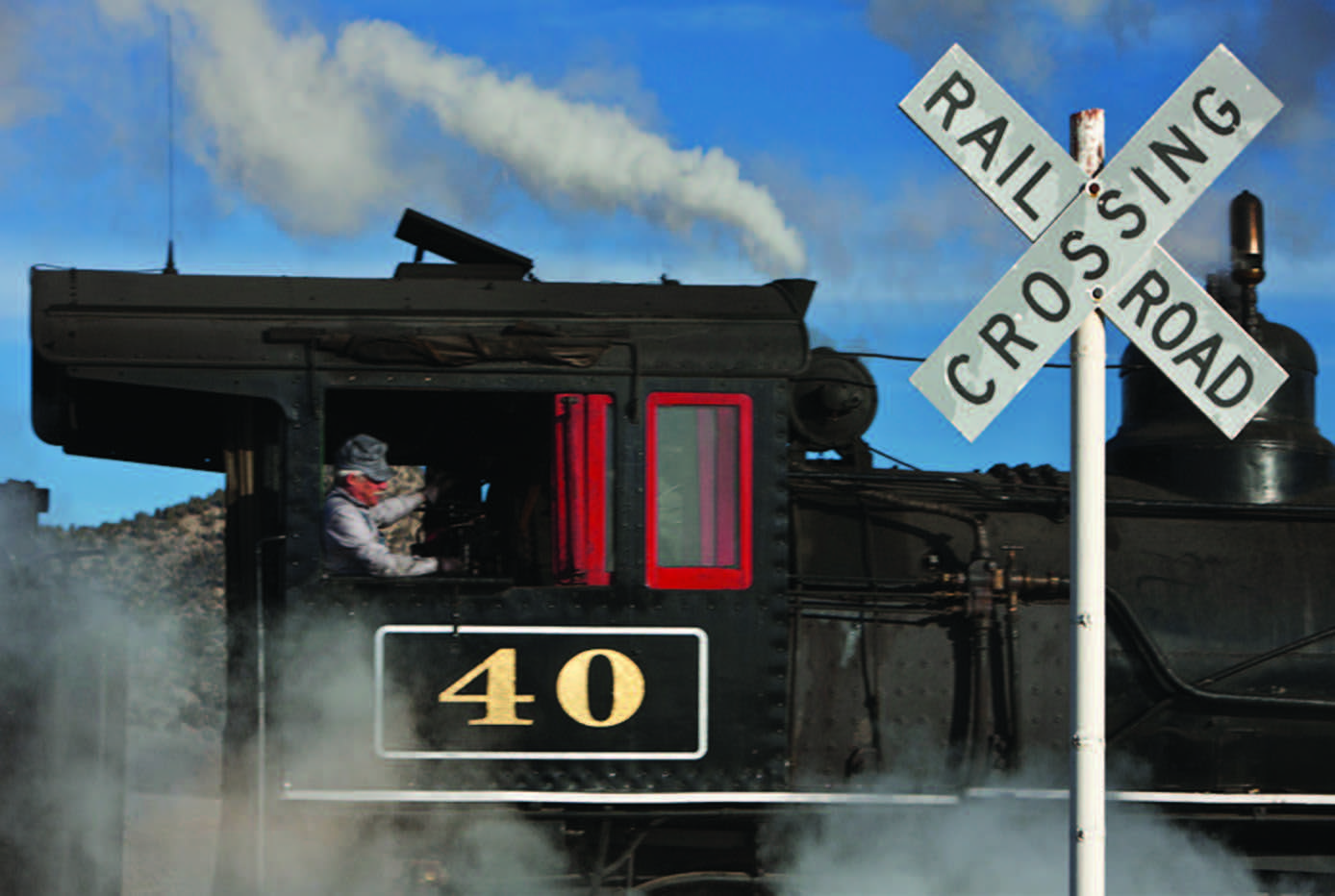A Museum In Motion
March – April 2016
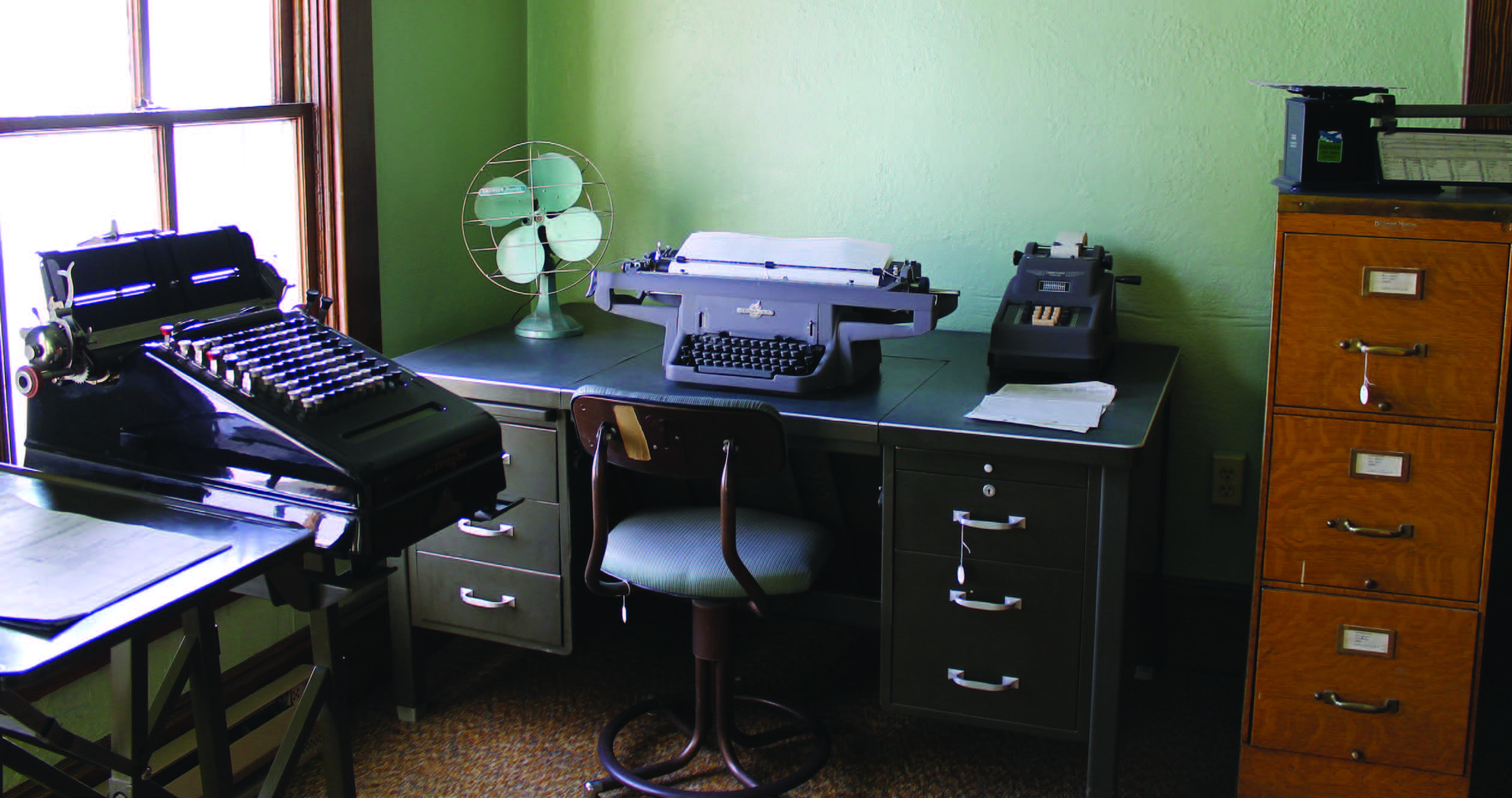
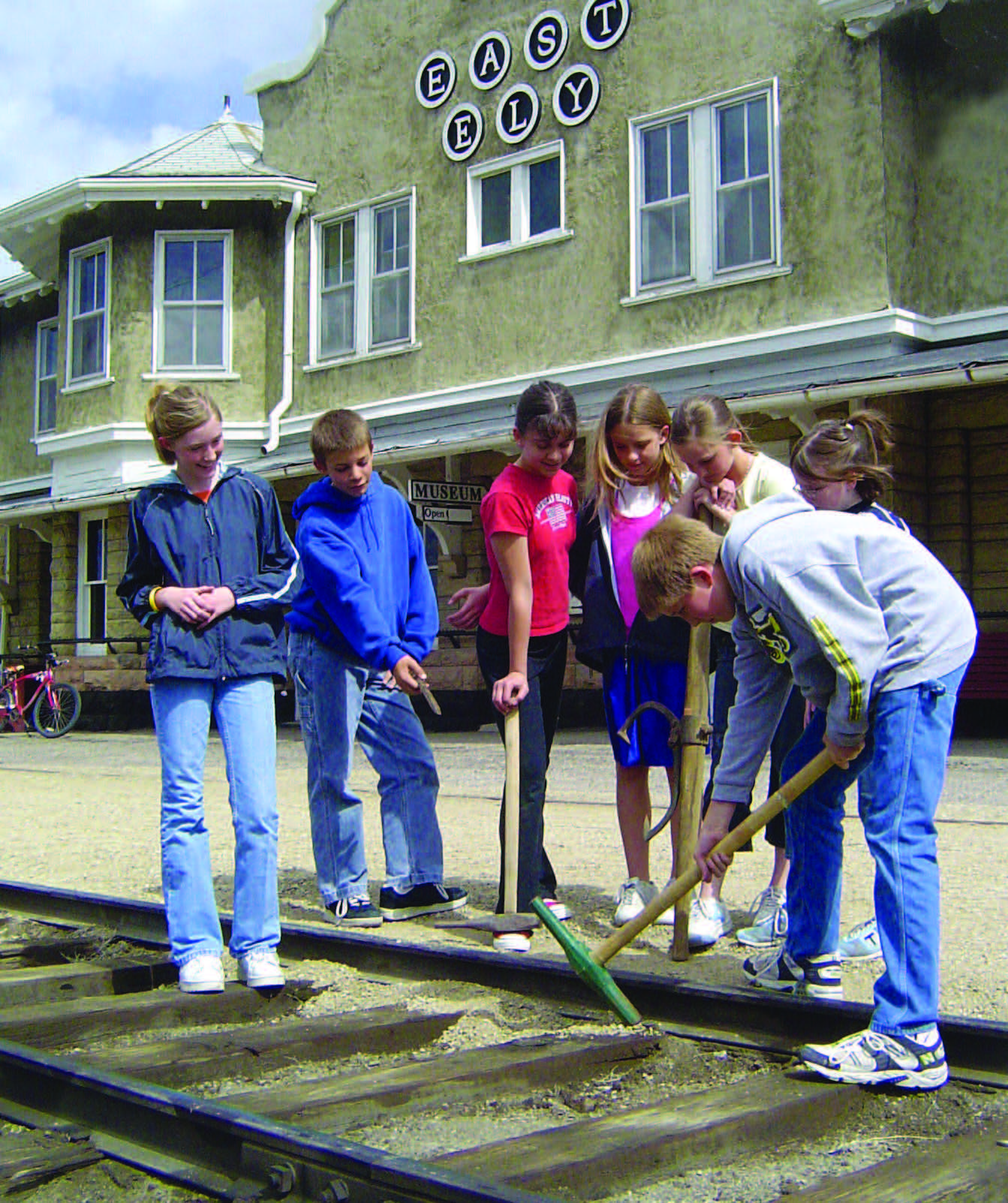
East Ely Railroad Depot chronicals decades of locomotive history.
BY LINDA FINE CONABOY
Railroad and history buffs, beware. The East Ely Railroad Depot Museum has designs on you, and if you visit, you’ll be back—again and again. The museum offers a trove of history, memories, and lore from days gone by, unaltered, carefully maintained, and available in its former glory to anyone making a trip to Ely.
“People often overlook the significance and authenticity of place,” says Peter Barton, administrator of the Nevada Division of Museums and History. “The story of the Nevada railroad is told right on site, where it happened, where it’s been preserved. The story’s intact. It’s all there.”
Barton says to his knowledge, there are only a handful of railroad experiences comparable to what’s available in Ely. He also notes that the museum is located in the East Ely Yards and is listed on the United States National Register of Historic Places.
Sean Pitts, director of the museum complex, is the on-site, go-to person and relishes his role. His knowledge of historical detail is not to be missed when paying a visit.
“It’s a short-line railroad,” he says, “meaning it doesn’t connect a major city to a major city.
It connects a copper mine to a main line railroad.”
People became aware of Ely’s copper in the 1870s, Sean says, but there was no real need for it until the advent of electricity, when “it became so valuable for wire that people were searching everywhere for it,” he says.
THE COST OF COPPER
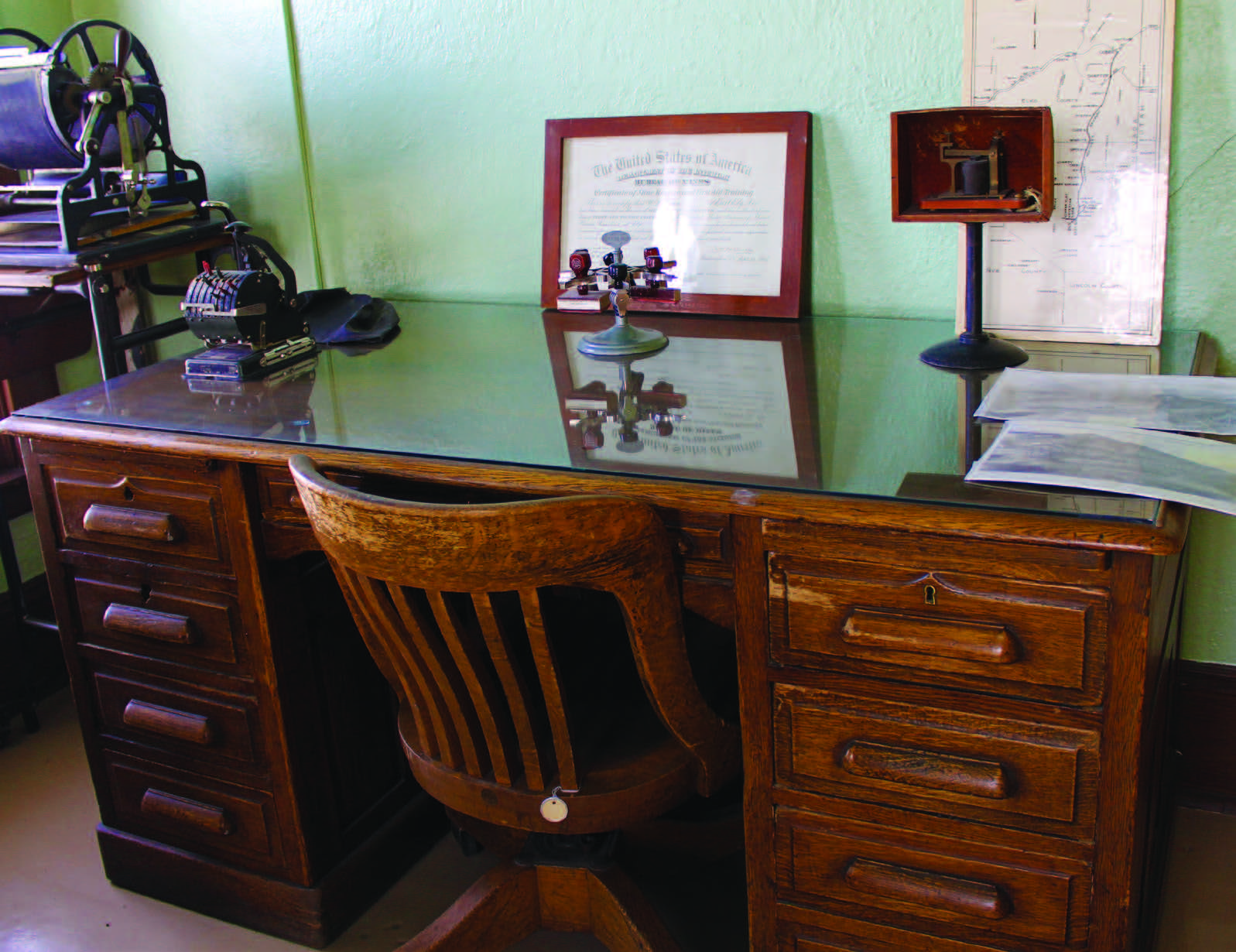
Eastern Nevada quickly became a top-producer of low-grade copper, along with other mines in Arizona, Utah, and Montana. Beginning with Consolidated Copper in 1908 and finishing with Kennecott Copper Company in 1983, the area rode the copper boom for 75 years, in three unique towns; Ruth produced it; Ely shipped it; and McGill smelted it.
According to Sean, the end of the boom came about as a perfect storm of events conspired to end the profitability of copper as it was known—simply put, demand plunged with the advent of fiber optic technology, just as the supply chain was on the rise.
Kennecott suddenly announced a layoff in 1983—a common occurrence then. Unfortunately, this time there was no call to return to the mines, leaving an astoundingly unique complex in eastern Nevada. Tools, documents, rolling stock, and payroll records were all left in place.
“Even the last day’s work schedule is still on the wall and the calendar is unturned, never to be changed,” Sean says.
A GREAT GIFT
What was a catastrophe for the area in 1983 has slowly morphed into the historical boon we have the opportunity to experience today: the East Ely Railroad Depot Museum and its co-entity, the Nevada Northern Railway, which is the group responsible for the trains and the popular themed rides.
Several years after the shutdown of its operation, Kennecott gifted the entire complex—more than 50 acres—to the city of Ely with a proviso that the city create a private, non-profit body to run it. In the early 1990s, the state became involved, establishing a state museum and hiring Sean as the fulltime director.
“We’re the eastern outpost of the seven state museums. For nearly a quarter of a century we’ve been here preserving and providing an educational component to augment the tourist trains,” he says.
The museum gets significant donations from private sources and federal grants for building restoration, and in the last 25 years they’ve restored two buildings and returned them to their original appearance. The collection contained therein is based on what the Nevada Northern Railroad left behind in 1983, including one of the American West’s best document collections.
“The value of our collection is priceless. It chronicles the beginning and the end of one company—Kennecott Copper. We also have blueprints and documents used to restore the old trains,” Sean says. The museum also holds the primary source documents of the area’s mining from the beginning.
MODERN MUSEUM
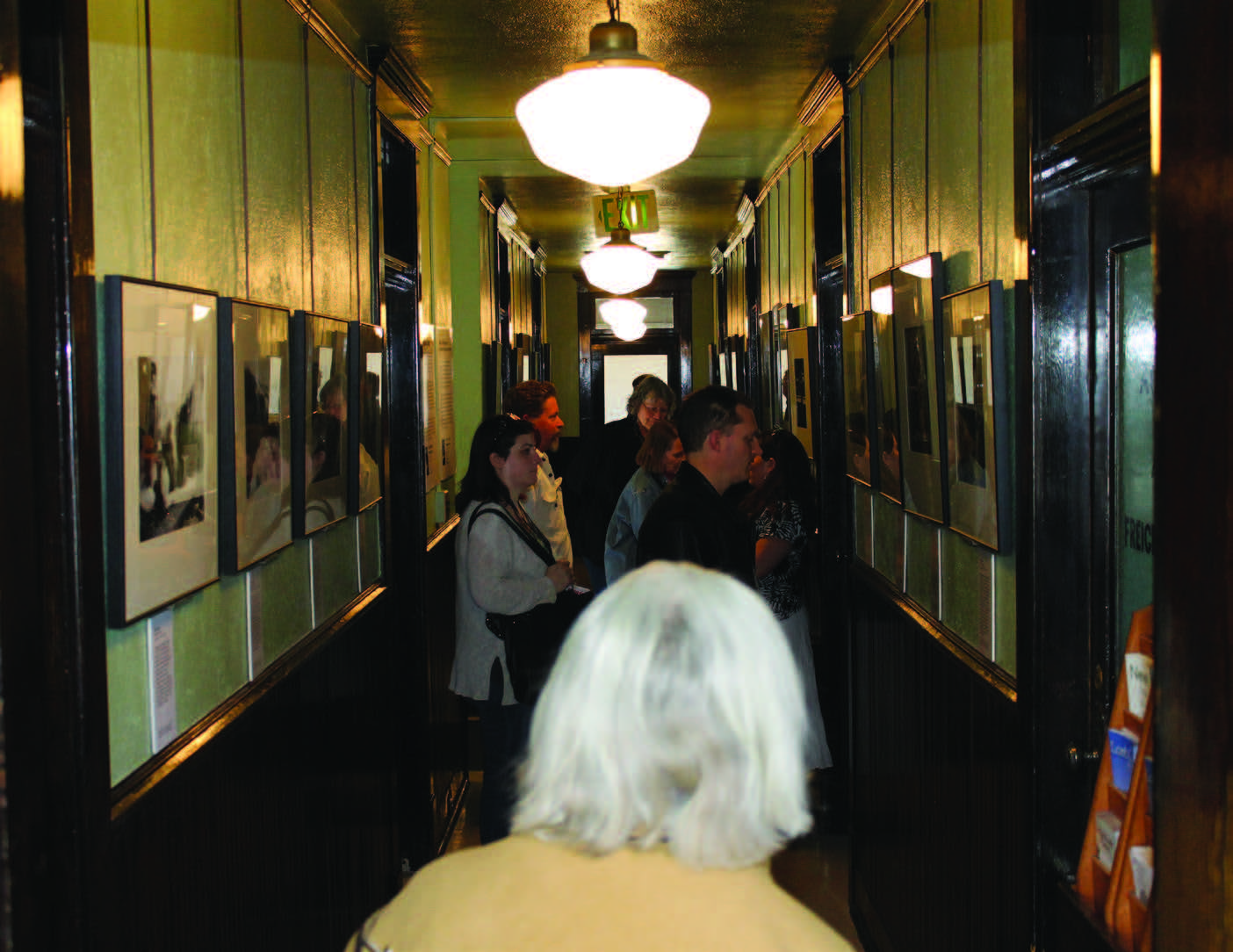
Looking forward, Sean says new buildings are planned for future construction. But until then, he extends an open invitation to come view the exhibits in the depot building where you’ll find period rooms that include examples of WWI, the 1930s, and post-WWII vignettes.
“You can actually see what the offices looked like during those periods,” Sean says.
Besides hosting traveling exhibits that change periodically, the museum is home to an award-winning exhibit entitled: “Steam: An Enduring Legacy.”
“We take our preservation role seriously,” he says. “In order for Nevadans to understand their heritage, they have to be put in contact with it. That’s what we do—put everybody, visitors and residents alike, in contact with eastern Nevada’s heritage.”
“We at the museum tend to tell the story of the history of the people,” says Peter Barton. “The workers, those impacted by the railroad, and the businessmen.”
But beyond that, the visitor can go outside and climb aboard a train for an authentic experience from more than 100 years ago. Two separate experiences, but to the visitor, the distinction is transparent.”
For a train buff, the only distinction that matters is an unforgettable glimpse into the history of Ely’s fascinating railroads.

